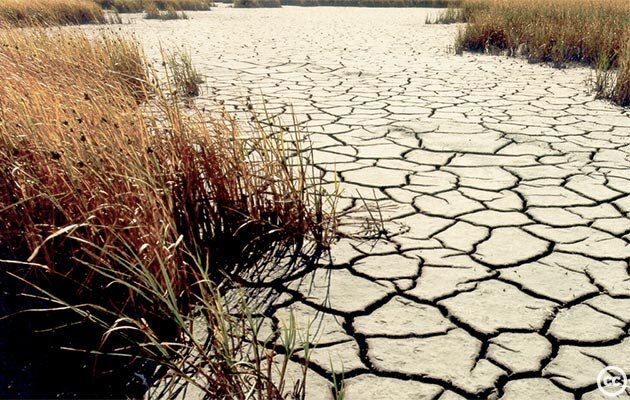Climate Change: New Extremes
As climate change progresses, we should expect more frequent, severe, and prolonged extreme heat events than would otherwise occur. There are numerous aspects of climate change that are associated with human health effects. These aspects, including extreme heat, should act as catalysts for meaningful climate action. Unfortunately, though, many of those who face the impacts of extreme heat contributed little to its causes, and are some of the least able to exert political pressure and create change.
There is no universally accepted definition for a heat wave due to the wide-ranging effects of regional variations. For example, humid areas may have a higher ‘threshold’ for declaring a heat wave because humidity index values often remain relatively stable throughout the year. However, the relationship between extreme heat and adverse health outcomes is strongly supported by the literature.
Extreme heat events are more concerning in cities than in surrounding rural areas due to the urban heat island phenomenon. Extreme heat events, also known as heat waves, are associated with various negative health effects in vulnerable population groups, including heat stroke and electrolyte disorders. As noted by Bobb et al. (2014), elderly adults can be especially vulnerable due to the fact that the body’s ability to thermoregulate tends to decline with increasing age, along with other factors. Such effects can impair normal functioning, cause or exacerbate illnesses, and even cause death. These risks are unacceptable, and they are avoidable.
Fortunately, many cities in high-income countries have cooling centres and other community buildings that can offer a respite from the heat to those without air conditioning. Other measures, such as green roofs, reflective surfaces, and ‘smart’ structures that can adjust according to the heat may also be useful, but they obviously do not relieve the need for extensive measures to combat climate change.
The situation is much more concerning in low- and middle-income countries (LMICs), many of which do not have sufficient resources to protect the health of their inhabitants during extreme heat events. Indeed, extreme heat, drought, food insecurity, and related geopolitical circumstances have been recognized by the United States’ military as a source of current and future regional instability. The vulnerability of populations in LMICs may be compounded by socioeconomic factors such as living in informal housing, food insecurity, lack of access to clean water, and other factors. Not only do these factors make surviving extreme heat much more difficult, but they may also lessen citizens’ ability to exert political pressure and demand appropriate environmental policies.
How can humans be expected to live and work in temperatures that exceed 45º or 50ºC? Where can they go if they experience heat stroke or other heat-related illnesses? Are current medical structures and systems capable of serving very large numbers of people during heat waves? Who should be responsible for planning for heat waves? Most likely governments, but few governments are able or willing to plan and execute potentially expensive prevention measures that will be required long after the typical four- to eight-year political term.
Extreme heat events are significant in an environmental health context because they are an example of the interactions between climate and human health. It is important to take action now due to the increasing global threat posed by climate change. But the situation also presents global health improvement opportunities: many changes that make cities less vulnerable to extreme heat, such as planting more trees and encouraging use of public transportation, also have numerous co-benefits for health. Finally, this is an important topic because, along with measures to cut greenhouse gas emissions, morbidity and mortality due to extreme heat events can be reduced through significant preparation and other efforts to reduce vulnerability in at-risk populations such as young children and elderly individuals.
We have much of the data and many of the tools necessary to make such changes. Citizens all over the world now need to demand sustained action from their local, regional, and national elected officials for meaningful change to occur. Recent action on climate change, including the Paris Agreement and the Kigali amendment to the Montreal Protocol, has been encouraging. But the political situation in the United States makes recent climate progress more precarious. And as millions continue to suffer from the effects of extreme heat, much more remains to be done.
References cited
Bobb, J., Obermeyer, Z., Wang, Y., and Dominici, F. (2014). Cause-Specific Risk of Hospital Admission Related to Extreme Heat in Older Adults. Journal of the American Medical Association. 312(24), p.2659-2667. doi:10.1001/jama. 2014.15715
Hajat, S., O’Connor, M., and Kosatsky, T. (2010). Health effects of hot weather: from awareness of risk factors to effective health protection. The Lancet. 375, p. 856-863. doi: 10.1016/S0140-6736(09)61711-6.
Holland, A. (June, 2016). Global Warming: Preventing Tomorrow’s Climate Wars. Scientific American. p. 61-65. [Accessed at http://www.nature.com/scientificamerican/journal/v314/n6/full/scientificamerican0616-60.html].
Kravchenko, J., Abernethy, A., Fawzy, M., and Lyerly, K. (2013). Minimization of Heatwave Morbidity and Mortality. American Journal of Preventive Medicine. 44(3), p. 274-282. doi:10.1016/j.amepre.2012.11.015
McGrath, M. (2016). Climate Change: ‘Monumental’ deal to cut HFCs, fastest growing greenhouse gases. BBC News. p.1. [Accessed at http://www.bbc.com/news/science-environment-37665529].
Pal, J. and Eltahir, E. (2016). Future temperature in southwest Asia projected to exceed a threshold for human adaptability. Nature Climate Change. 6, p.197-200. doi:10.1038/n climate2833.
Watts, N. et al. (2015). Health and climate change: policy responses to protect public health. The Lancet. 386, p. 1861-1914. doi:10.1016/S0140-6736(15)60854-6

